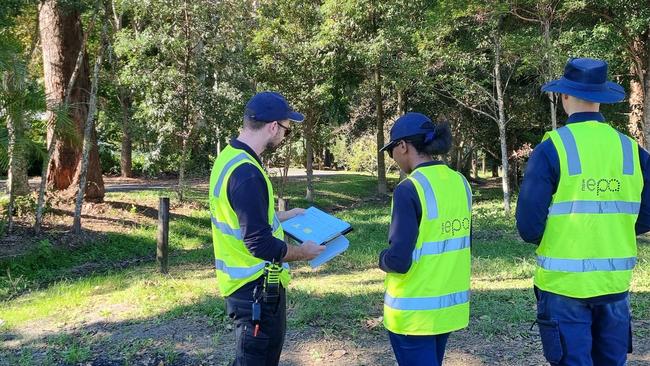‘Forever chemicals’ contamination levels at Mullumbimby remain unknown
As the EPA continues to test the groundwater at Mullumbimby, more experts have expressed concern about the impact of PFAS or ‘forever chemicals’ in the Byron Shire. Here’s the latest.

Byron Shire
Don't miss out on the headlines from Byron Shire. Followed categories will be added to My News.
As the Environmental Protection Agency (EPA) continues to test the groundwater at Mullumbimby, more experts have expressed concern about the impact of PFAS or ‘forever chemicals’ in the Byron Shire.
The University of New South Wales Head of Engineering Stuart Khan told the Byron Shire News that “it’s the concentrations (of PFAS) that matter in terms of how safe or unsafe it is”.
PFAS or ‘forever chemicals’ are defined as a broad range of chemicals used in many applications for fire retardants, waterproofing and stain resistant materials that persist in the environment.
While the EPA has not disclosed the levels of PFAS detected, they have revealed it was recorded as “exceeding national drinking water guidelines ”.
Mr Khan said it was not an easily solved situation and there was “no cost effective remediation process for contaminated groundwater”.
“It’ll stay contaminated until the pollutants dissipate sufficiently to be below safe levels,” he said.

“I just think the whole story is that it’s a disaster, it should never have happened, and we have got to make sure that we put measures in place to stop this kind of unmanaged pollution by chemicals that are going to hang around forever to prevent it from happening again.”
His comments come a week after the EPA targeted 68 homes in a doorknock to offer sample testing of residents’ bore water.
The investigation was limited to groundwater bores in the Byron Shire and not to nearby creeks and rivers, which have shown no signs of PFAS detection.
According to the EPA, Fire and Rescue NSW (FRNSW) originally detected the PFAS in the groundwater south west of the Mullumbimby Fire Station.
The synthetic chemicals were discovered as part of a routine check by the department.
PFAS were previously been detected in the Butler Street Reserve at Byron in 2021.
Southern Cross University’s Dr Douglas Tait said he would not be surprised if more locations were found.
“Sadly it’s more common than I would like especially near around waste areas, airports and landfill or anywhere where there’s been any sort of training for firefighters,” the groundwater expert said.

He warned detection of PFAS would become more common and while lower concentrations will have minimal impact, when they become higher things “become difficult”.
“It accumulates over time and so it might be low concentration now but they may get higher and they move as well because groundwater isn't static,” Dr Tait said.
He’s not the only Australian researcher concerned about the impacts of PFAS.
A world first study to quantify the environmental burden of PFAS on a global scale by University of NSW’s Professor Denis O’Carroll is currently underway and due for completion in 2026.
Professor O’Carroll warns that “we’re likely underestimating the environmental burden posed by PFAS”.
As the EPA continues to gather the results from their fact-finding mission, Byron Shire Mayor Michael Lyon urged residents to follow the advice to limit bore water use and avoid eating home grown food until further testing is completed.




